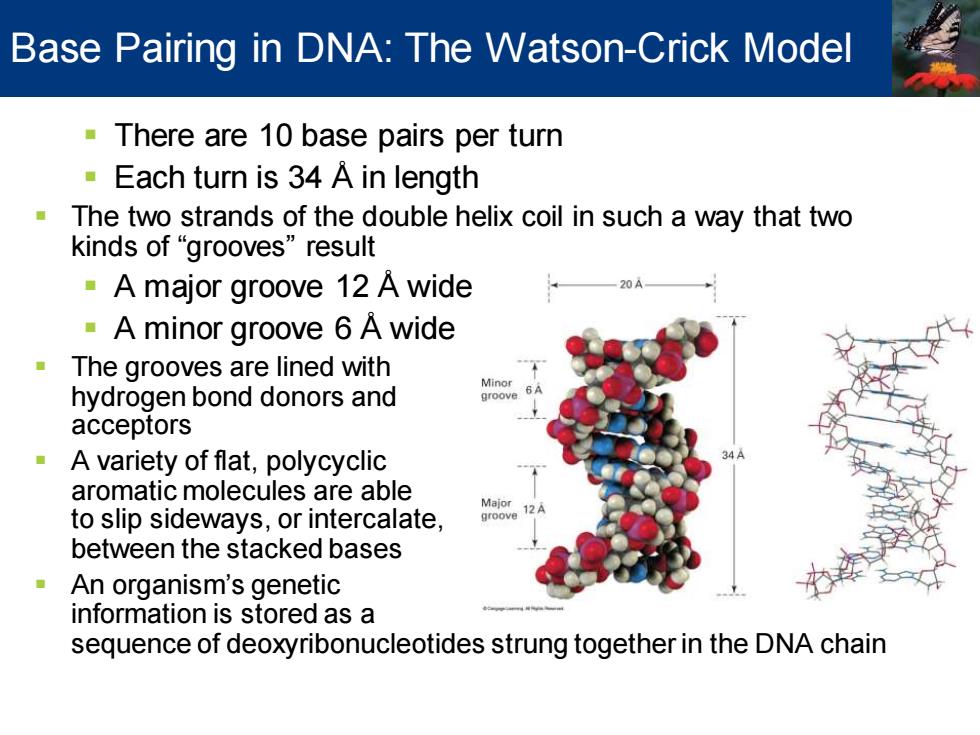正在加载图片...

Base Pairing in DNA:The Watson-Crick Model There are 10 base pairs per turn Each turn is 34 A in length The two strands of the double helix coil in such a way that two kinds of“grooves”result A major groove 12 A wide 20 A minor groove 6 A wide -The grooves are lined with Minor hydrogen bond donors and groove acceptors A variety of flat,polycyclic aromatic molecules are able Major to slip sideways,or intercalate, groove 12 A between the stacked bases An organism's genetic information is stored as a sequence of deoxyribonucleotides strung together in the DNA chain▪ There are 10 base pairs per turn ▪ Each turn is 34 Å in length ▪ The two strands of the double helix coil in such a way that two kinds of “grooves” result ▪ A major groove 12 Å wide ▪ A minor groove 6 Å wide ▪ The grooves are lined with hydrogen bond donors and acceptors ▪ A variety of flat, polycyclic aromatic molecules are able to slip sideways, or intercalate, between the stacked bases ▪ An organism’s genetic information is stored as a sequence of deoxyribonucleotides strung together in the DNA chain Base Pairing in DNA: The Watson-Crick Model